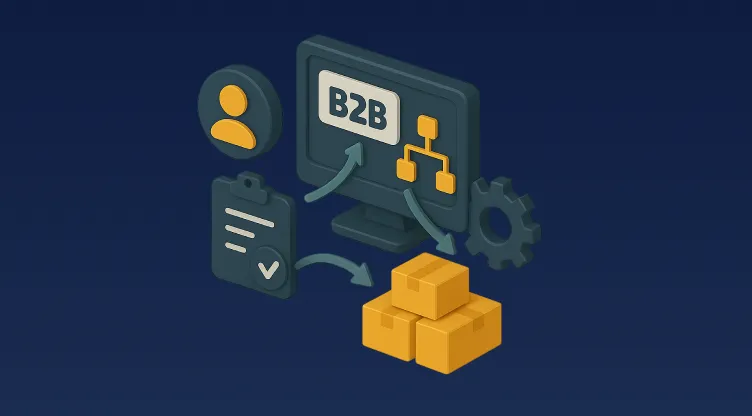Inventory Control Policies: FIFO, LIFO, and FEFO in Practice

Table of Contents
Inventory control isn’t just about keeping stock levels in check—it’s about optimising how, when, and in what order goods move through your warehouse. Whether you're in retail, manufacturing, or third-party logistics, choosing the right inventory strategy can mean the difference between profit and loss, compliance and penalties, or even customer satisfaction and churn.
In this blog, we explore the real-world applications of three key inventory control policies—FIFO (First In, First Out), LIFO (Last In, First Out), and FEFO (First Expired, First Out). We’ll break down each policy, examine its strengths, and help you understand where and how it fits best in your supply chain.
Let’s dive into the practical world of inventory control.
Understanding Inventory Control at a Glance
Before dissecting each method, it’s important to understand why inventory control matters so much. In today’s omnichannel, fast-paced retail and e-commerce landscape—particularly across MENA markets—companies deal with real-time stock movements, expiration tracking, returns, and variable demand.
Platforms like Omniful have revolutionised this space, offering inventory visibility, automation, and support for complex fulfilment models like dark stores and hyperlocal delivery. However, even the most advanced tools need effective policies to guide inventory flow. That’s where FIFO, LIFO, and FEFO come in.
FIFO: First In, First Out
FIFO meaning is as straightforward as it sounds: the oldest inventory items (the first in) are sold or used first (the first out). It's a widely used and recommended method, especially for businesses dealing with perishable or time-sensitive goods.
Where FIFO Works Best
-
Retail and FMCG: Items with a shelf life—think dairy, cosmetics, or beverages—must move out quickly to avoid waste.
-
Pharma and healthcare: Ensures compliance with strict expiry regulations.
-
Grocery chains: Particularly those operating dark store models for quick-commerce in markets like Saudi Arabia or the UAE.
Real-World Analogy
Picture a milk delivery to a grocery store. The older cartons are placed at the front of the fridge. Customers pick from the front, ensuring that the milk with the shortest shelf life is consumed first.
Benefits of FIFO
-
Minimises expired or obsolete stock
-
Accurate cost of goods sold (COGS) in stable pricing environments
-
Easier to comply with health and safety regulations
LIFO: Last In, First Out
LIFO flips FIFO on its head. Here, the most recently added inventory (last in) is the first to be used or sold (first out). It’s a method more often used in accounting than physical inventory handling, but it has strong financial implications.
Where LIFO Fits In
-
Industries with volatile input prices: Think of construction, metals, or oil-based products.
-
Tax-heavy markets: Countries or companies seeking to reduce taxable income during inflationary periods.
A Quick Analogy
Imagine a pile of sandbags stacked during flood season. When you need to remove bags, it’s easier to grab the ones on top—those added last—first.
Why Use LIFO?
-
Reduces profit during inflation, hence lower taxes
-
Matches recent costs with current revenues
-
Protects against cost increases impacting reported margins
Drawbacks to Consider
-
Not compliant with IFRS (used widely across MENA)
-
Higher risk of outdated inventory build-up
-
Can misrepresent the actual inventory value
FEFO: First Expired, First Out
FEFO meaning stands for First Expired, First Out, and this policy prioritises items based on expiry dates, regardless of when they were received.
This method is gaining popularity with the rise of omnichannel fulfilment and increasing consumer expectations around freshness and quality.
Best Fit for FEFO
-
Pharmaceuticals and clinical supplies: Legal and safety compliance is paramount.
-
Perishable food and beverage brands: Especially relevant for quick-commerce models.
-
Cosmetics and wellness: Where shelf-life impacts product efficacy.
Analogy in Practice
Imagine a warehouse with several batches of face cream. Batch A came in first but expires in six months, while Batch B, received later, expires in two months. FEFO ensures Batch B is picked and shipped first.
Benefits of FEFO
-
Reduces wastage from expired goods
-
Ensures better quality for end consumers
-
Improves traceability and recall management
Comparison of FIFO, LIFO, and FEFO
| Feature | FIFO | LIFO | FEFO |
|---|---|---|---|
| Focus | Entry Date | Entry Date | Expiry Date |
| Popular in | Retail, Pharma | Manufacturing, Construction | Pharma, Food, Cosmetics |
| Accounting Usage | IFRS-compliant | Not IFRS-compliant | Not an accounting method |
| Stock Movement Logic | Oldest stock first | Newest stock first | Soon-to-expire stock first |
| Risk of Expired Stock | Low | High | Very low |
| Shelf Life Consideration | Basic | None | Core focus |
| Complexity | Moderate | Simple | High (requires expiry tracking) |
Choosing the Right Strategy for Your Business
Each method serves a purpose, but picking the right one depends on your business model, product type, regional regulations, and operational capability.
Questions to Ask:
-
Are your products perishable or sensitive to shelf life?
-
Is your pricing stable or volatile?
-
Do you need to comply with health, pharma, or food safety laws?
-
Are your inventory systems capable of expiry tracking?
How Modern Platforms Support These Strategies
Platforms like Omniful enable businesses to implement and customise inventory flows. With support for batch management, expiry tracking, and real-time sync across channels, it’s easier than ever to apply FEFO, FIFO, or LIFO practically.
For example:
-
Batch & Lot Management ensures proper tracking for FEFO.
-
Real-Time Inventory Sync supports FIFO across multi-channel fulfilment.
-
Inventory Adjustment via Mobile enables real-time LIFO-based movements if needed for financial strategy simulations.
Advanced systems also integrate expiry-based alerts, cycle counts, and automation rules—helping businesses automate these strategies with minimal manual effort.
MENA-Specific Considerations
In the Middle East and North Africa region, regulatory compliance and customer expectations around freshness are particularly high in sectors like:
-
Pharma: Strict health regulations in Saudi Arabia and UAE demand FEFO.
-
F&B Retail: The quick-commerce boom has made FIFO and FEFO essential for hyperlocal delivery models.
-
E-commerce & 3PL: Partners demand real-time visibility and expiry-safe handling.
With infrastructure now enabling real-time visibility—thanks to cloud-native platforms—these policies can be implemented even across fragmented or geographically dispersed fulfilment networks.
Final Thoughts: Aligning Policy with Profit
Ultimately, the right inventory control policy is one that aligns with your operational capabilities, market conditions, and customer promises.
-
Use FIFO when freshness and quality are your main concerns.
-
Consider LIFO in industries with cost fluctuation and when tax implications are a strategic focus.
-
Implement FEFO when expiry dates define safety, quality, and compliance.
Whichever method you adopt, having a modern inventory management system that supports flexibility, automation, and integration is the foundation of inventory excellence.
Platforms like Omniful are already empowering businesses across MENA to make these strategies not just a concept—but a competitive edge.























